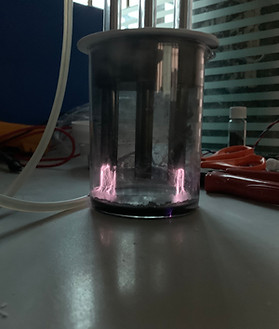
Our research encompasses fundamental plasma physics investigations, where we delve into plasma diagnostics, plasma modeling and quantification of reactive chemical species. This knowledge serves as a foundation for our applied research, where we design and optimize plasma-mediated processing for environmental, material, food and agriculture applications.
The ppl is equipped with a comprehensive array of advanced instruments to push the boundaries of knowledge in low temperature plasma physics. Through meticulous experimentation and theory coupled with meticulous data analysis, we aim to unravel the mysteries of low temperature plasmas and unlock their potential for numerous technological applications.
Research activities
Development of low temperature plasma systems
The PPL is actively involved in developing low temperature plasma systems for various applications. The lab is equipped with DC, tunable low frequency, radio frequency and microwave plasma generators. The lab also have facility of performing the IV characteristics using high voltage probe and current probe.

Non- thermal plasma jet

Thermal plasma jet

Multi plasma jet

Single needle corona discharge

Multi needle corona discharge

Dielectric barrier discharge

Surface dielectric barrier discharge

Corona discharge
Spectroscopic diagnostics of low temperature plasmas
The plasma processing lab houses state of the art instruments for the spectroscopic characterization of low temperature plasma.

Time-integrated and time-resolved optical emission spectroscopy and imaging system

Tunable diode laser absorption spectroscopy systems
Quantification of reactive chemical species

Plasma-mediated processing for various applications

Plasma - water treatment

Plasma - assisted material processing

Plasma - food treatment
Quantum mechanical calculation of cross sections & plasma population kinetic modeling


Atomic structure calculations
Cross section calculations

Population kinetic modeling
Machine learning methods and real-time plasma diagnostics

